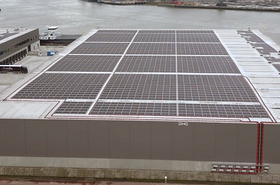In our business it is very important to know what it is that makes a metro into a successful data hub. There are a number of factors: latency, a major fiber crossroads, power, land and capital availability. And of course, lots of data-hungry customers.
These are the factors that have driven the FLAP (Frankfurt, London, Amsterdam, Paris) or ‘top tier’ markets, and they are equally vital for the development of the new generation of high-growth data hubs, most of which are now expanding fast across Southern Europe.
Tier two goes up a gear
Growth is not exclusive to the south of course. I am seeing a lot of demand for new metro capacity in Germany for instance ‒ Hamburg, Munich, and Berlin. The FLAP markets will continue to grow fast too, but power capacity and site restrictions are slowing them down a bit.
The tier two markets will grow faster. All of the investors I have talked to recently have billions of Euros set aside to invest in these markets. And broadly speaking it is Southern European metropolitan hubs ‒ Madrid, Barcelona, Marseille, Milan and Rome ‒ that will grow the fastest.
Of them all, Madrid will be number one, growing faster and attracting more investment, with the potential to quickly catch up with Paris. Why? It has all of the data hotspot factors and a few more besides, and forecasts and plans are already turning into physical projects on the ground.
Capital connections
Over and above excellent availability of capital, land and power, Madrid is domestically and internationally very well-connected. There are a number of new intercontinental sea cables landing on the Iberian coast, deepening its data links to North Africa, the Middle East, South and North America.
Domestic connectivity is good too. Madrid is right in the middle of a population of 50 million, six million of them in Madrid alone, generating 20 percent of Spain’s GDP.
And reaching them will not be hard, as there has been excellent investment in fiber and 5G coverage which is now paying dividends. 5G is up and running, reaching the majority of the population, and Spain now has the highest FTTH penetration of any country in the EU, with ultrafast broadband covering 87 percent of the country.
Building pace
The leading service providers have all committed to build cloud zones in and around Madrid. There are now Microsoft and Google Cloud Regions, an IBM Multi-Zone Cloud Region, a new Meta campus in Toledo to the south and a Meta Lab in the city. AWS has announced a multi-billion local investment plan, and Oracle has opened a Cloud Infrastructure (OCI) region there.
Considering that these cloud businesses are currently leasing around 75 percent of all colocation capacity in Europe, it makes sense for us all to be there and building fast. Where the clouds go, colocation will thrive.
And that is exactly what is happening. According to CBRE Data Center Solutions research there are already commitments to grow Madrid’s current data center capacity of 116 MW of IT supply to 435 MW by end 2024. The end 2024 is not that far away, and these are firm projects, not forecasts. That is a CAGR of nearly 100 percent. Madrid is hot, and it’s going to get hotter.
New campus
This is why IMDC is investing in a Madrid campus which could potentially be the biggest in Spain. Today total Madrid data center market capacity is 116 MW and we intend to take up our full allocated 130 MW of campus capacity as fast as we can, with 79 MW of it available for customer IT load.
That alone is a huge step change in the market, and makes us one of the biggest players in the region, delivering compliant, secure, sustainable wholesale and retail spaces and services in the heart of Europe’s new hotspot.
This week we published a new EMEA Infrastructure Planning Report that looks in more detail at the Madrid market and the various issues and opportunities that customers should consider. If you want to know more you can read it here.
More from Iron Mountain Data Centers
-

Designing for decarbonization: A whole new species of data center is about to emerge
While energy consumption remains a critical element for creating a sustainable world, the data center of the future will be built to consider far more than power alone
-

Iron Mountain signs solar PPA in the Netherlands
Company signs with Sunrock to procure energy from rooftop solar site in Rotterdam
-

Sponsored The beginning of the end for FLAP?
As the data center industry broadens its horizons beyond the traditional FLAP (Frankfurt, London, Amsterdam, Paris) regions, is it the beginning of the end for this arguably self-limiting acronym?


